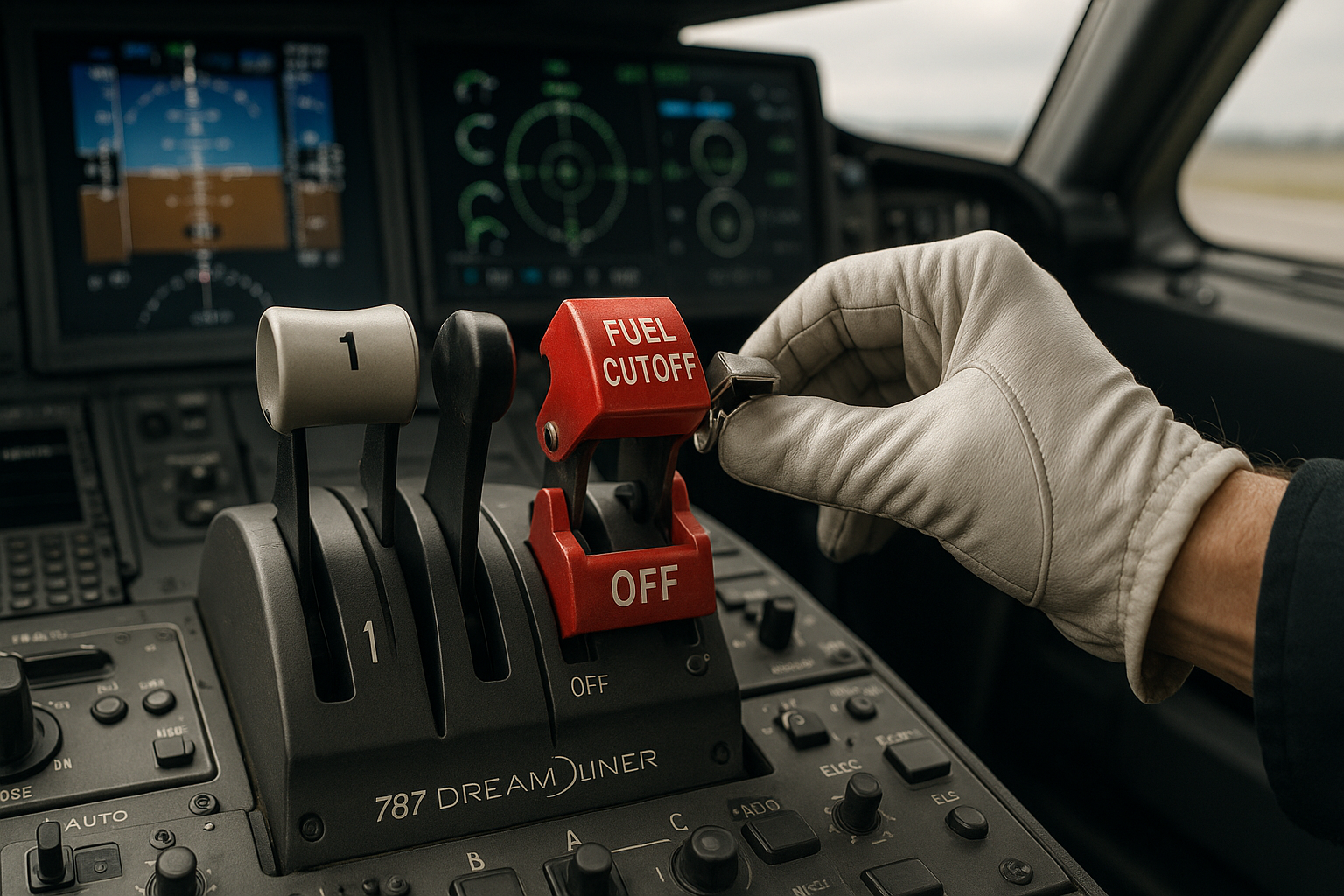The preliminary report on last month's catastrophic Air India crash has revealed something chilling—something that makes the hair on the back of your neck stand up. Someone, somehow, physically moved both engine fuel cutoff switches to the "CUTOFF" position shortly after takeoff.
Let me say that again. Someone turned off the engines. Mid-flight.
I've covered aviation disasters for years, and there's usually a complex chain of events leading to tragedy. Not this time. This appears disturbingly straightforward.
The Boeing 787 Dreamliner, carrying 242 people, had barely reached 180 knots when both engines suddenly lost fuel supply. Physics is unforgiving at low altitude—the pilots desperately tried to restore power, but they simply ran out of airspace and time. The resulting crash into a medical college hostel killed 260 people, including ground casualties.
What's eerie about the report is its clinical detachment. It documents with meticulous precision how the switches were "transitioned" (such a sterile word for an action that killed hundreds) without yet pointing fingers. Was it catastrophic error? Something more deliberate? The investigation continues.
Boeing investors, meanwhile, hardly blinked. The stock initially dipped about 2% after the June crash but quickly recovered as early reports suggested human factors rather than mechanical failure. Wall Street, cold as ever, prices in tragedy based on liability, not lives lost.
Look, these aren't buttons you accidentally brush against while reaching for your coffee. Having toured 787 cockpits during manufacturing facility visits, I can tell you these critical switches sit behind the throttles, protected by metal guards and equipped with locking mechanisms specifically designed to prevent accidental activation. They're deliberately difficult to move.
There's always been this tension in aviation design—giving pilots necessary control while protecting against catastrophic mistakes. Engineers call it "error tolerance," and it's something that extends far beyond airplanes.
(It reminds me a bit of those market circuit breakers that kick in during flash crashes... though even those can't stop determined selling once trading resumes.)
The most haunting detail comes from the cockpit voice recorder: "one of the pilots is heard asking the other why did he cutoff. The other pilot responded that he did not do so."
Let that sink in.
Experienced pilots—the captain with 15,000+ hours, the first officer with 3,400+—seemingly unaware of how their aircraft's most critical systems were being manipulated. It's like waking up to find someone's hands on the steering wheel of your car.
The crew's desperate attempts to restore power show they understood immediately what had happened. They flipped the switches back to RUN, and the engines were "in the process of powering back up when the crash happened." So close, yet not enough time for the massive turbofans to spool up before impact.
For Boeing, this report represents something of a reprieve. The company has been fighting an uphill battle with quality control issues across multiple aircraft programs, but here the evidence points away from manufacturing defect. The engines were relatively new, the fuel tested clean, and all takeoff settings appeared normal until... well, until they weren't.
The final report will take months, maybe years. Investigators will reconstruct every second, every action, every word spoken in that cockpit. They'll determine whether this was a tragic mistake, a misunderstanding, or something far darker.
But already this case stands as a stark reminder that even with all our technological safeguards—in aviation or elsewhere—we remain vulnerable to that most unpredictable of factors: the human element.
Sometimes, switches get flipped. And then gravity takes over.
